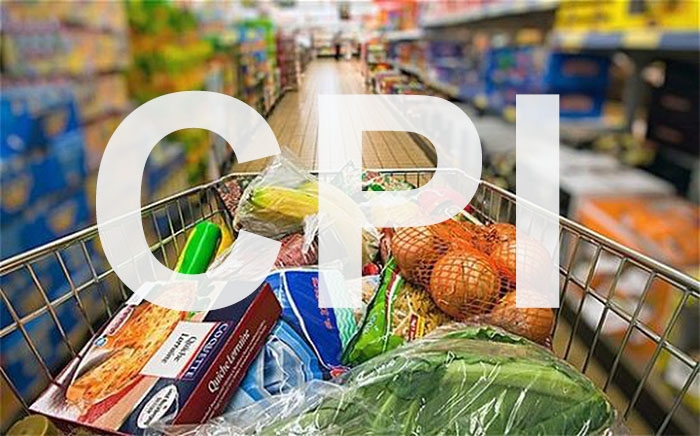On track to inflation target despite robust CPI rise
 |
| On track to inflation target despite robust CPI rise |
Within the on-month increase of 1.52 per cent in the consumer price index (CPI) in February, housing and construction materials had seen the highest growth rate with 4 per cent, contributing 0.75 percentage points to the overall CPI increase. This group was followed by food and related services which saw an increase of 1.61 per cent, mainly due to the sharp rise in demand during Lunar New Year.
Traffic ranked third, up 1.55 per cent due to the increase in gasoline and oil prices on January 26 and February 25, with both indices increasing by 3.28 per cent.
Over the first two months, the CPI decreased by 0.14 per cent on-year, giving a glimpse of what could happen once the pandemic is better controlled through vaccines. At the same time, the domestic and global economies have been recovering, with inflation showing rising tendencies over the same period last year.
Last year experienced a series of successes in macroeconomic stability and inflation control despite the pandemic, which led to a decline in production and business activities and the use of a portion of resources for disease prevention instead of economic development.
An expert at the Price Market Research Institute under the Ministry of Finance (MoF) said that inflation in 2020 clearly showed a demand-pull factor and that total revenue of retail sales of goods and consumer services only rose by 2.6 per cent compared to 2019. Excluding the price factor, the development shows a decrease of 1.2 per cent, while in 2019 the increase amounted to 9.5 per cent.
Demand-pull inflation is the upward pressure on prices that follows a shortage in supply where too much money is chasing too few goods. This factor’s role in inflation was stronger when the producer price index of the industry in 2020 decreased by 0.6 per cent while services decreased by 0.73 per cent, seeing only agricultural production prices increase by 8.24 per cent. Meanwhile, the export price index decreased by 1.32 per cent, and the import price index decreased by 0.59 per cent.
Even before the pandemic began, market research institutes were warning that managing and operating prices, as well as controlling inflation, would become much more complicated and difficult than in recent years. The risk of high inflation had peaked as the CPI in January 2020 increased by 6.43 per cent compared to the same period in 2019.
However, COVID-19 has changed everything when comparing these periods. The CPI has fallen continuously and fell below the threshold of 3 per cent from April 2020, while the average CPI despite its downward trend throughout the remaining months fell just below the 4 per cent threshold since last August.
With the pandemic being more controlled worldwide with the introduction of wide-scale vaccine distribution, production and commercial activities are gradually being restored.
But the situation remains very difficult, said Nguyen Anh Tuan, director of the MoF’s Price Management Department, who argued that it is especially complicated to make forecasts for a number of items in 2021.
“The price level of essential goods has not fluctuated as Vietnam continues to be affected by the global market and business activities in tourism, aviation, and entertainment continue to face difficulties,” Tuan explained.
Up to now, he added, the aggregate demand of the economy is unlikely to recover to pre-pandemic levels as the pressure of increasing domestic prices comes from continuing to adjust the prices of some public services according to the market roadmap. Some items have high input costs but did not consider price increases in 2020.
Even after the first two months of 2021, the pandemic remains complicated, threatening the recovery of the world’s economic growth. Dr. Can Van Luc, a member of the National Advisory Council on Financial and Monetary Policies, noted that three factors can increase inflation pressure. First is the ability of the global economy to recover from the pandemic in general, including Vietnam, while the demand for goods and services is increasing and promoting new price levels.
Secondly, global inflation may increase in 2021, due to the amount of money that countries and central banks have pumped out to prevent the pandemics and support a major economic recovery as well as monetary liquidation and interest rate reduction in 2020 – all of which will have a stronger impact.
Lastly, forecasts all show that prices of basic commodities, including oil, will continue to increase again – and although these will not be large jumps, they will create more pressure.
What the stars mean:
★ Poor ★ ★ Promising ★★★ Good ★★★★ Very good ★★★★★ Exceptional
Related Contents
Latest News
More News
- Protect what’s next: towards a future free from meningococcal group B disease (December 05, 2025 | 18:00)
- New ILO report offers policy recommendations for disability inclusion (December 04, 2025 | 15:18)
- Maternal job loss may affect children’s mental health, research shows (December 03, 2025 | 19:11)
- Women lead Vietnam’s shift to climate-resilient agriculture (December 03, 2025 | 19:10)
- Experts highlight unpaid care work as key barrier to gender equality (December 03, 2025 | 15:15)
- Opportunities and inequalities for women workers in Vietnam's garment industry (December 03, 2025 | 09:00)
- Vietjet flights carry love to devastated central region (November 28, 2025 | 11:35)
- New initiative to boost the fight against domestic violence (November 26, 2025 | 10:00)
- South Korea funds IOM relief for Vietnam’s typhoon-affected communities (November 24, 2025 | 15:33)
- AI and human-centred values set to shape the future of HR in Vietnam (November 21, 2025 | 18:04)

 Tag:
Tag:






















 Mobile Version
Mobile Version